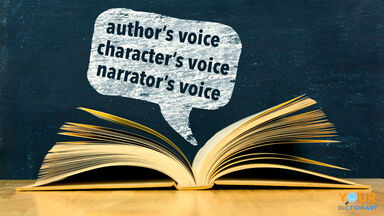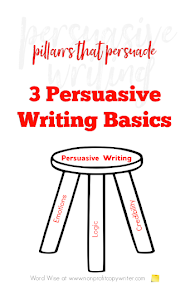This semester, I acquired information that altered my understandings of reading/writing and provided me with new insights. I demonstrated my findings in a format that was unfamiliar/new to me... blogging! At first I found blogging to be really odd, because I have never done anything like it before. I don't have Facebook and I do not post on Instagram very often. Thus, writing my thoughts in a manner that is read by others, in a way that reminds me kind of like a newspaper article (with less formality at times), was tricky.
Yet, just like anything, the more practice I had (the more blogs I did) the more confident I became! By engaging in these blogs, I came to recognize a few important things about the format itself (that the learning outcomes do not fully mention). I enjoyed having the chance to explore my peers work (blessing/addressing or pressing their thoughts) later on in entries. That is a very important skill to do as an educator, to collaborate and extend/share knowledge! The incorporation of visual images, in addition to our online format for sharing information, helped to provoke my thinking and reminded me what was important to take away. I loved adding pictures to my work and often added around 3 to support my "bigger" points. Looking at my peers and I this semester, from our blogging experience we have truly become "a community of writers" (Lacina, 2012, p. 319). Writers who are engaging in practices that correspond with the time frame we live in, a world filled with technology. Working with others, selecting media to convey meaning and engaging in an online format are all important skills that have become more polished for me, and skills I can teach my future students (where fit).Our student learning 618 outcomes:
1. The variety of modes, genres, and formats for reading and writing
Focusing on mode and genre were two areas I hardly thought of prior to this course. Thinking of the format of a piece of work, I often focused on the aesthetic aspects, and not really the format/tone for the writing. I learned a great deal about genre style, when interacting with the Tompkins text. I transferred my knowledge from this experience and our writers workshop classes, unto my blogs. From here I practiced writing certain genres (like a friendly letter to Dr. Jones) or explored more about the mode/format when looking at my peers work.
2. The role of purpose and audience in writing and reading and the elements of author’s craft used to address the desired purpose(s) and audience(s)
In my first blog, I recognized that blogging in itself requires me to have a perspective that aligns with my thoughts and purpose for presenting my thinking [to persuade, entertain or inform]. Often when I wrote my blogs, I wrote them in a manner where I was trying to show my big take away(s) in relation to the field of education. I recognized that my audience was my peers, Dr. Jones, and myself. My thoughts, questions, and findings can be seen in providing "advice/takeaways" for what is important to recognize or implement. My writing often informed my peers, while at times I may have tried to persuade them with language that highlights what educators need to provide for students.
3. The cognitive processes and strategies of reading and writing, including the composition strategies used in crafting and comprehending texts
My own ability to write has developed through the use of these blogs. In Blog 2, I discuss how "Writing... is a skill that develops with use. Writers need time to write" (Calkins & Ehrenworth, 2016, p. 8). As I have written each blog, I take the time to reflect on my previous entry. I am always seeing where I can build off of my thinking (by re-considering past knowledge) and I engage myself in an inner-dialogue to think critically of reading/writing/teaching literacy. Reading and writing both require us to be alert and aware of the information being conveyed! I certainly feel more confident in my ability to teach writing (or how to engage students in literacy activities) now, vs. what little I knew from the past.
4. The relationship between the writing and reading processes and the iterative nature of the composition and comprehension processes
Much of my writing from this course centers on Tompkins, but I also aim to incorporate outside research. Bridging together what I have read and what I can write about those findings, has certainly impacted my ability to comprehend the key takeaways from this course. In my third blog, I come to addressing having students apply what they learn in practice activities. Thus, being able to transfer skills over, incorporating writing words to reading those words in sentences, increases students retention of the word and its meaning. I also appreciated how from class we read Tompkins, and wrote/engaged in hands on instruction during the genre workshops. From these experiences, where I looked at specific genres (outcomes 1 & 2), I was able to see how I could educate future students and show that reading and writing go together. From blogging, I have been provided the chance to explore my understandings and my "ah-ha" moments, which have added to my knowledge about significant literacy principles/genres.
5. The role of metacognition in writing (composing) proficiency and reading comprehension
I have seen the importance of acknowledging the PROCESS of writing! Often we forget that it is ok to get stuck, to change ideas, to question our work. All of that is natural when we write! Calkins and Ehrenworth (2016) as stated from my fourth blog say it perfectly, "all writers... engage in the process of writing... [to] collect and organize; they draft, they revise, they edit" (p. 7). As I have been writing these journals, I often find myself editing my wording and reflecting on how I can be more clear in expressing my thoughts. I try not to rush getting to the end product, because the process is just as important! In my fifth blog I share how at times the process of learning to write as Tompkins describes (each step we shall take), are steps I can find to be difficult to do at times.
6. The role
of assessment and evaluation in determining student development as composers
and comprehenders of texts
This is an area of my journals that I did not shine much light upon. Yet, I now recognize how reading and writing have many layers that require educators to support students in now only learning, but also demonstrating their understanding. Even quick check-ins, like having students write lines from a mentor text to show their understanding how that text is persuading or if the sentence is a descriptive sentence, will be important to incorporate! Having students become aware of their prior knowledge to current knowledge is powerful and can be done through checklist or writing activities [like the poem I just mentioned in my twelfth blog, "I use to.. but now"] (Tompkins, 2012, p. 159). We have to have students not only learn about the genres (or see the connection with reading and writing), they have to practice doing it themselves and become aware of where they can improve as scholarly learners.
References
Calkins, L. & Ehrenworth, M. (2016). Growing extraordinary writers: Leadership decisions to raise the level of writing across a school and a district. The Reading Teacher, 70(1), 7-18.
Lacina, J. & Griffith, R. (2012). Blogging as a means of crafting writing. The Reading Teacher, 66(4), 316-320.















